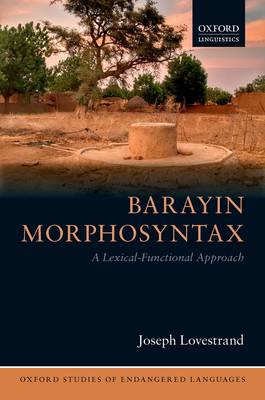
- Afhalen na 1 uur in een winkel met voorraad
- Gratis thuislevering in België vanaf € 30
- Ruim aanbod met 7 miljoen producten
- Afhalen na 1 uur in een winkel met voorraad
- Gratis thuislevering in België vanaf € 30
- Ruim aanbod met 7 miljoen producten
Zoeken
Omschrijving
This volume offers a Lexical-Functional Grammar (LFG) analysis of the morphosyntax of Barayin, a Chadic language spoken by about 6000 people in the Guera region of Chad. The core chapters of the book draw on rich empirical data to provide analyses of the basic clause, noun phrases, verb phrases, and serial verb constructions. The version of LFG adopted here includes two recent innovations: the first is minimal c-structure, which results in simpler phrase structure representations; the second is the assumption that glue semantics accounts for argument selection, rejecting the need for a level of a-structure or for Completeness and Coherence in f-structure. Argument sharing in serial verb constructions can thus be modeled in a connected s-structure. This method of modeling semantic composition in complex predicates is extended to directional and associated motion complex predicates in Choctaw and Wambaya, removing the need to appeal to a special mechanism to unite semantic forms in such constructions.
Specificaties
Betrokkenen
- Auteur(s):
- Uitgeverij:
Inhoud
- Aantal bladzijden:
- 236
- Taal:
- Engels
- Reeks:
Eigenschappen
- Productcode (EAN):
- 9780198851158
- Verschijningsdatum:
- 21/04/2022
- Uitvoering:
- Hardcover
- Formaat:
- Genaaid
- Afmetingen:
- 160 mm x 229 mm
- Gewicht:
- 498 g

Alleen bij Standaard Boekhandel
+ 322 punten op je klantenkaart van Standaard Boekhandel
Beoordelingen
We publiceren alleen reviews die voldoen aan de voorwaarden voor reviews. Bekijk onze voorwaarden voor reviews.











